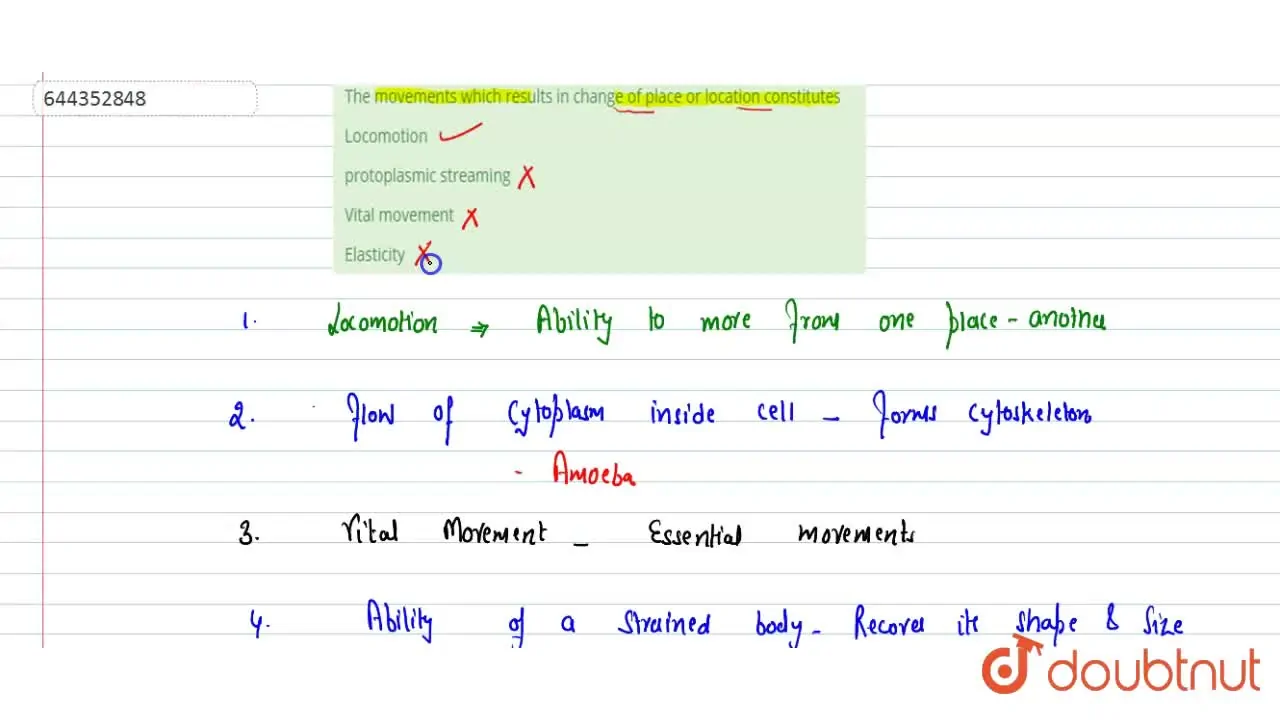The movements which results in change of place or location constitutes
Locomotion
protoplasmic streaming
Vital movement
Elasticity
The correct Answer is:A
Step by step video & image solution for The movements which results in change of place or location constitutes by Biology experts to help you in doubts & scoring excellent marks in Class 12 exams.
Related Playlists
- BOOK - AAKASH INSTITUTE ENGLISHCHAPTER - LOCOMOTION AND MOVEMENTEXERCISE - ASSIGNMENT SECTION-B25videos
LOCOMOTION AND MOVEMENT
- BOOK - AAKASH INSTITUTE ENGLISHCHAPTER - LOCOMOTION AND MOVEMENTEXERCISE - ASSIGNMENT SECTION-C43videos
LOCOMOTION AND MOVEMENT
- BOOK - AAKASH INSTITUTE ENGLISHCHAPTER - LOCOMOTION AND MOVEMENTEXERCISE - EXERCISE30videos
LOCOMOTION AND MOVEMENT
- BOOK - AAKASH INSTITUTE ENGLISHCHAPTER - HUMAN REPRODUCTIONEXERCISE - Try Yourself19videos
HUMAN REPRODUCTION
- BOOK - AAKASH INSTITUTE ENGLISHCHAPTER - MICROBES IN HUMAN WELFAREEXERCISE - Assignment (SECTION - D Assertion - Reason Type Questions)10videos
MICROBES IN HUMAN WELFARE
Similar Questions
A mutation results in change in
View SolutionRead the statements :
(a) Movement resulting in change of place is locomotion
(b) Locomotion is in an involuntary movement .
(c) Locomotion is generally for the search of shelter and food .
(d) Methods of locomotion performed by animals vary with habitats .
Find out the WRONG statements .View SolutionThe amoeboid movement results from
View SolutionThe amoeboid movement results from
View SolutionTropic movements occur as a result of
View SolutionWhich of the following constitutes a buffer ?
View SolutionMutation is the phenomenon which results in alteration of DNA sequences and consequently result in a change in the
View SolutionWhich of the following pairs constitute isotones ?
View SolutionWhich of the following pairs constitute isotones ?
View SolutionGenes that change their location on chromosome are
View Solution


